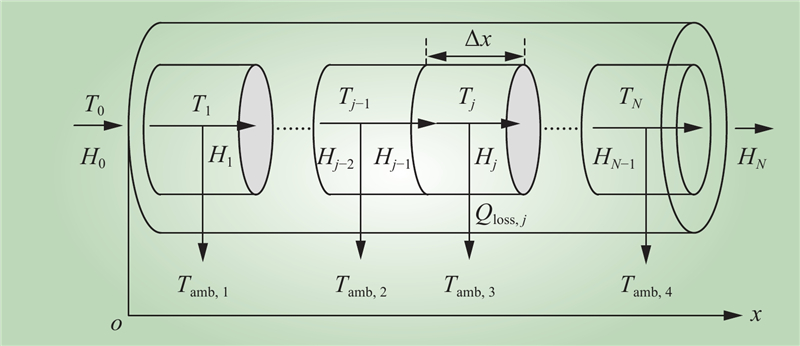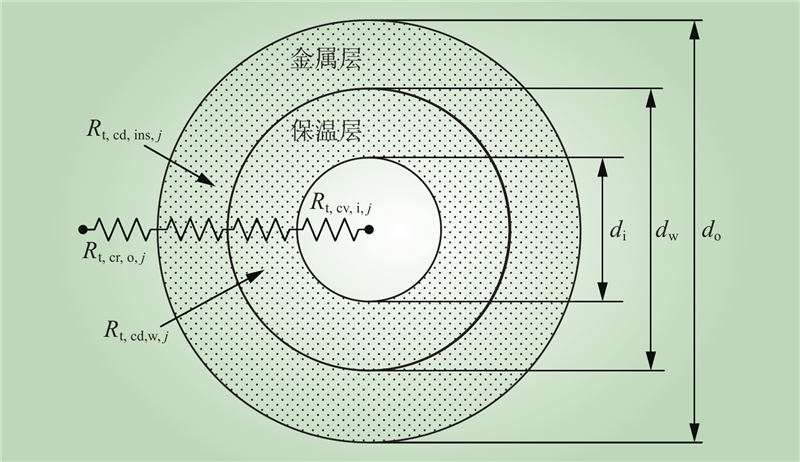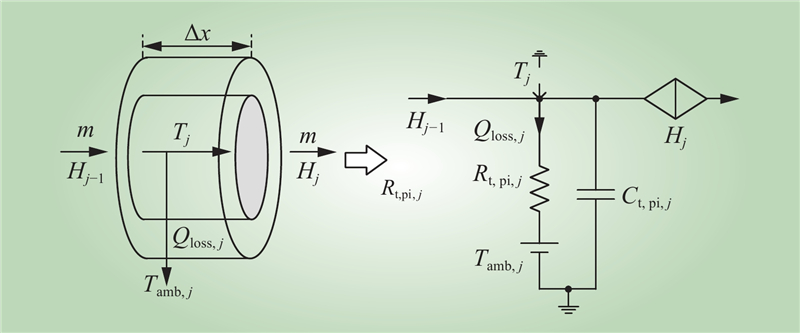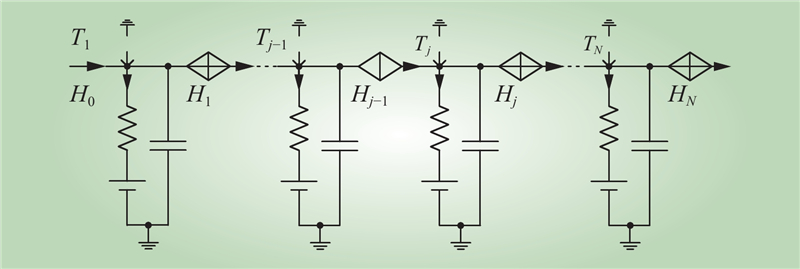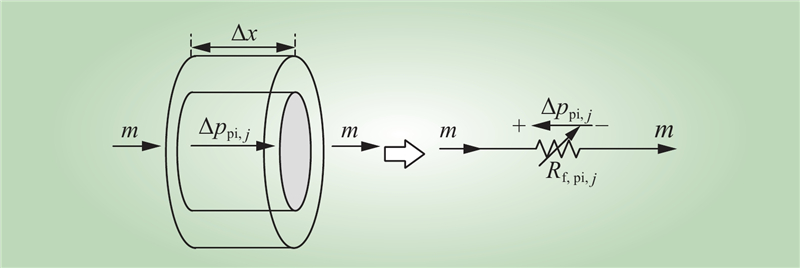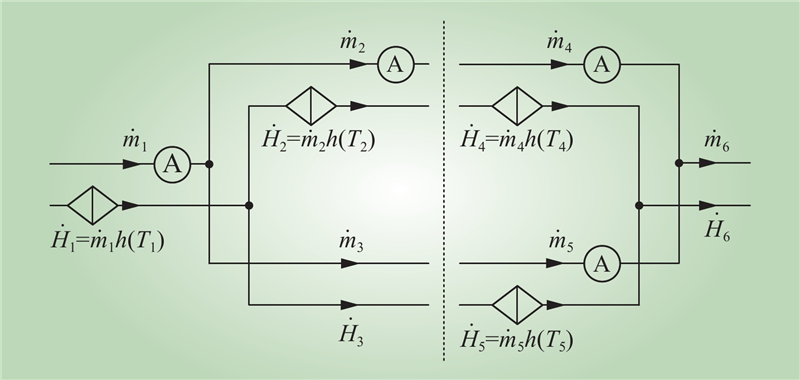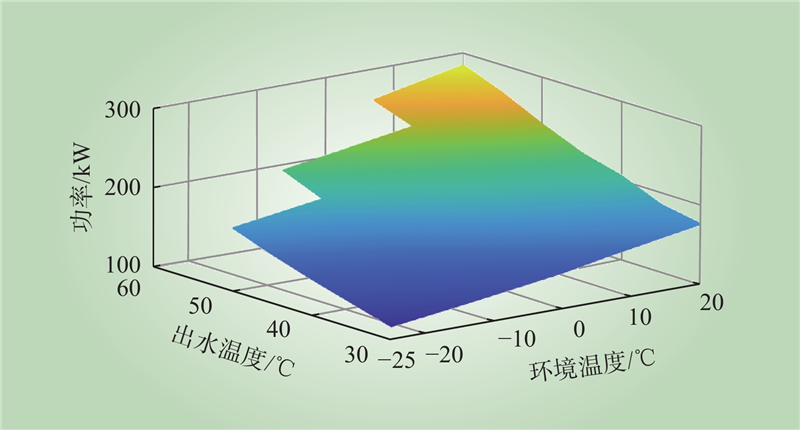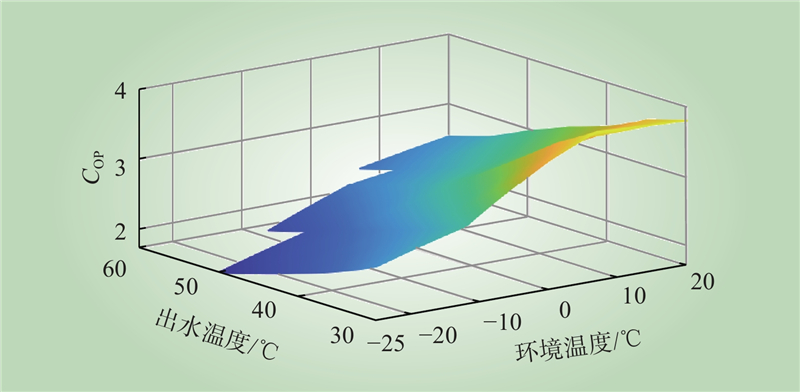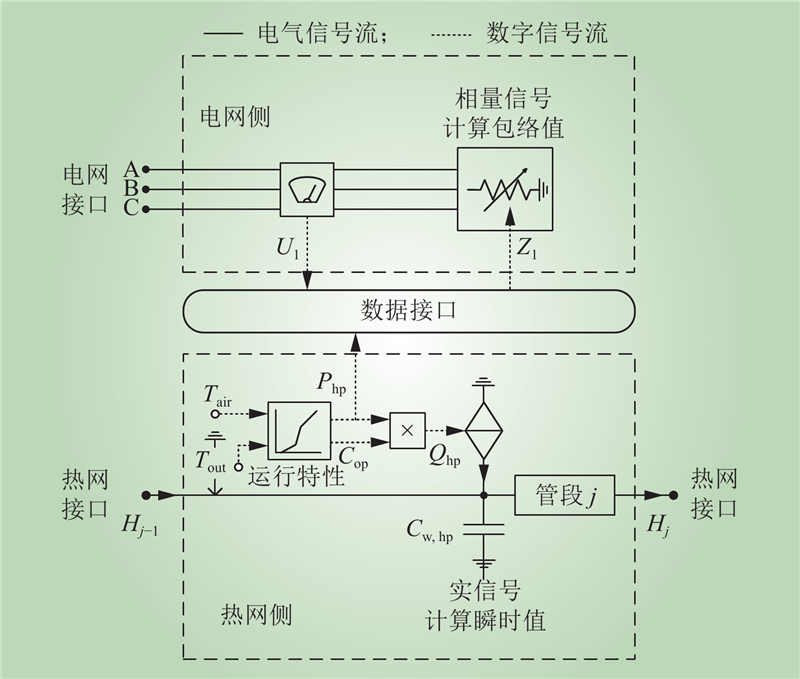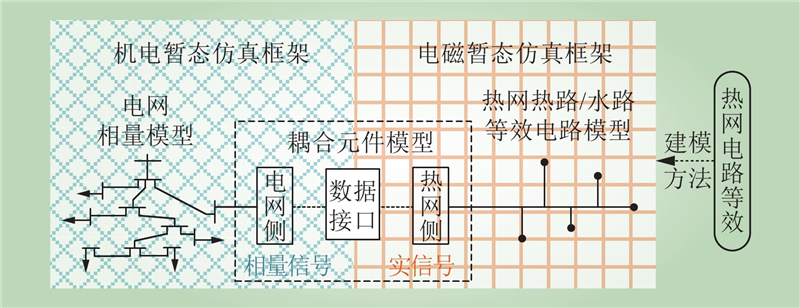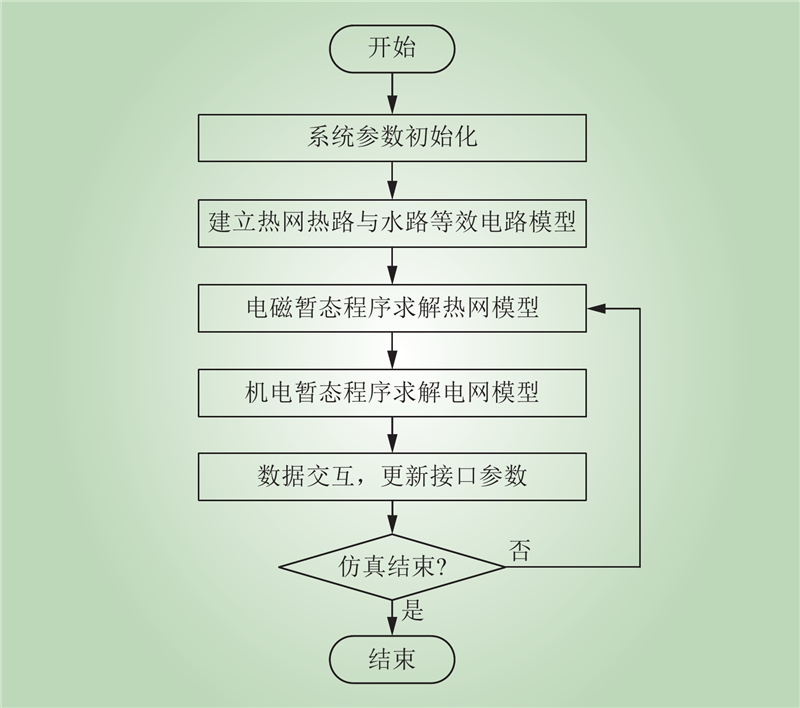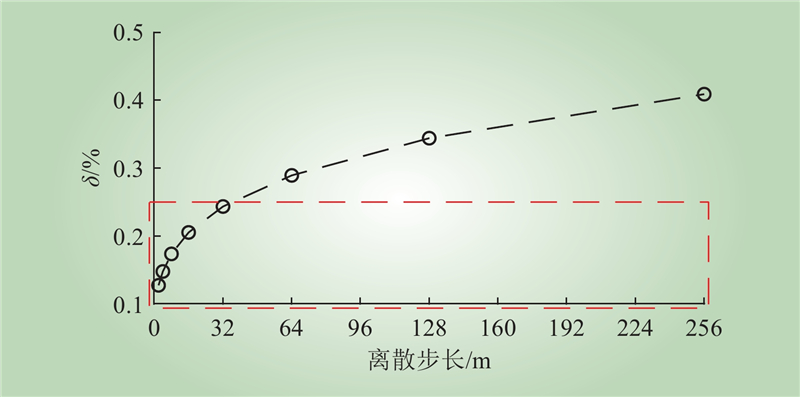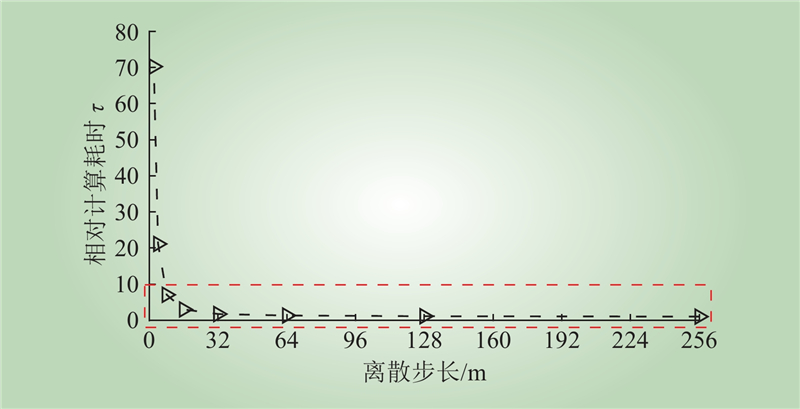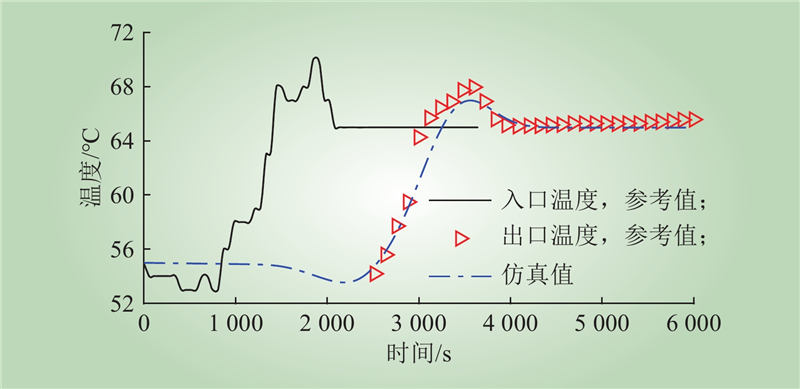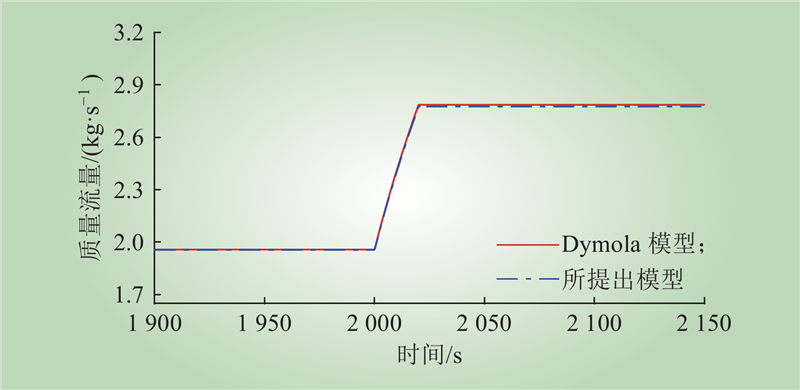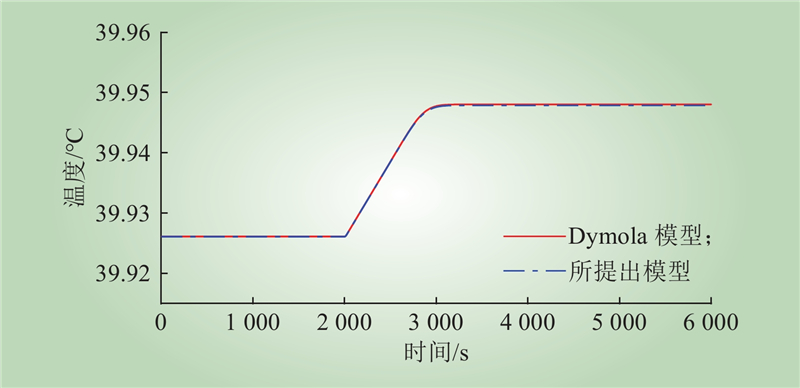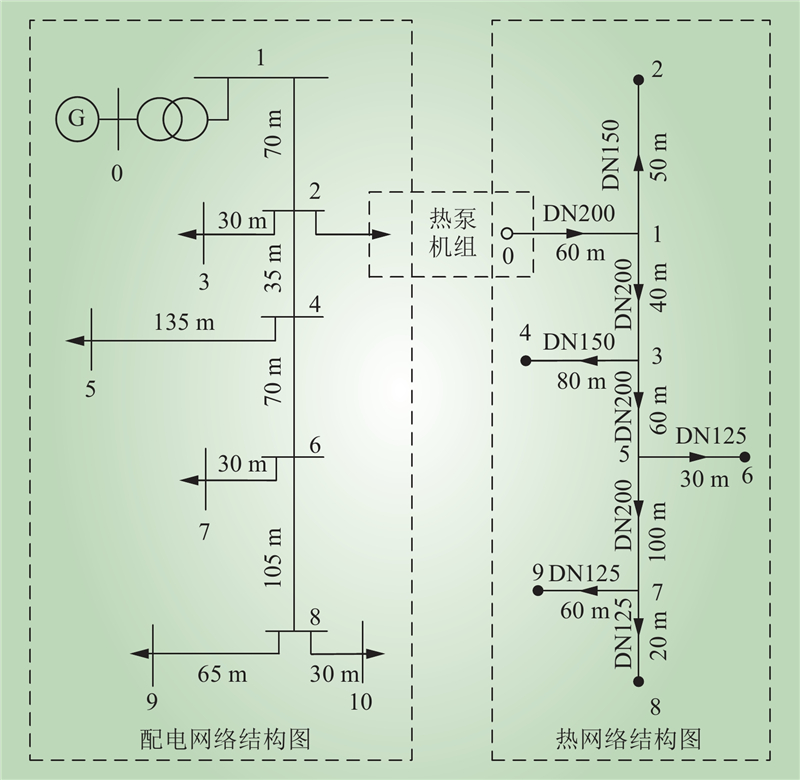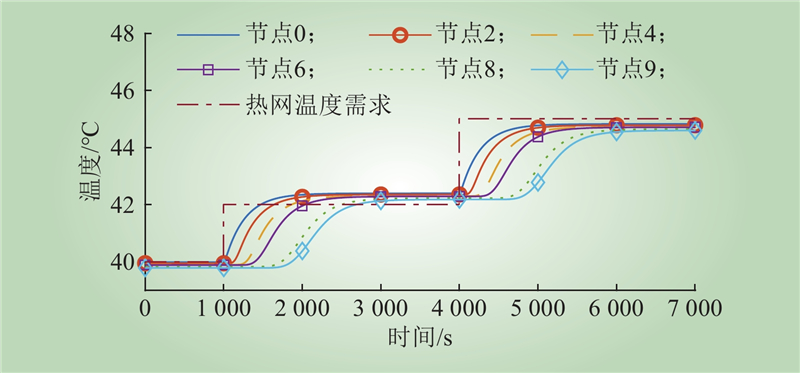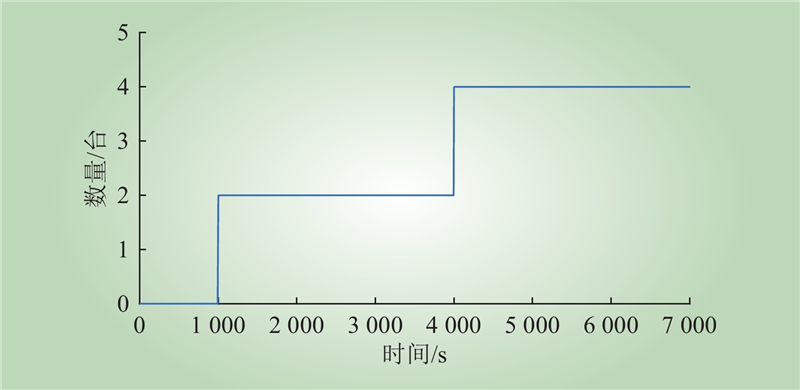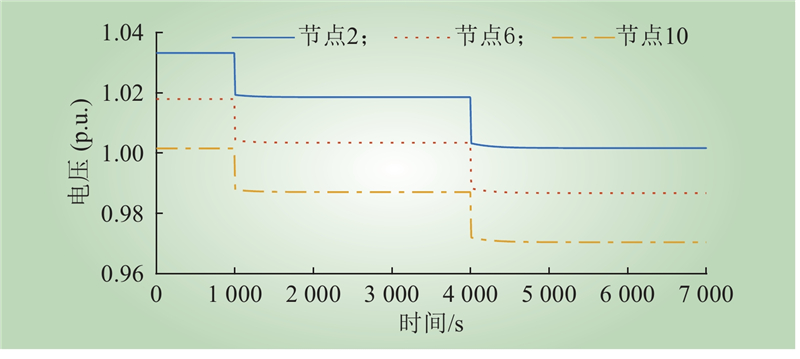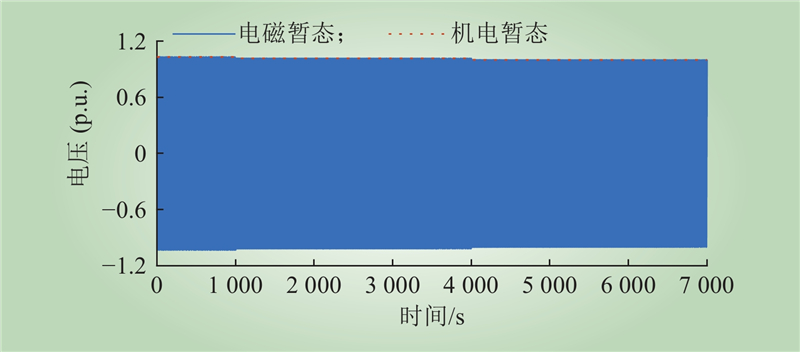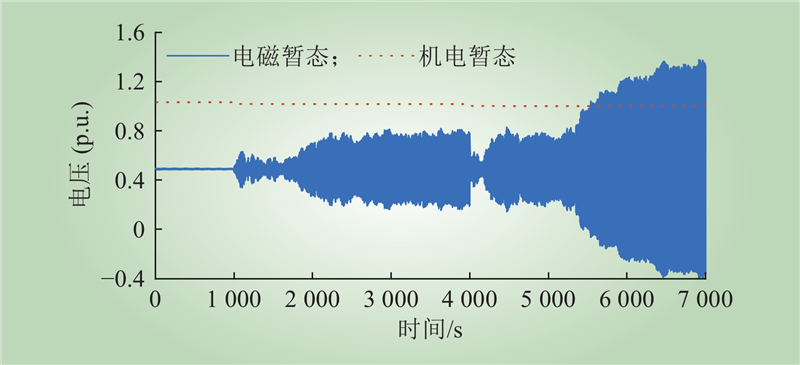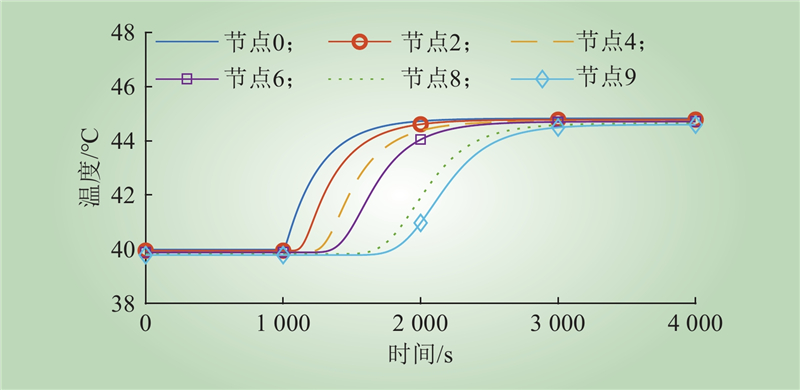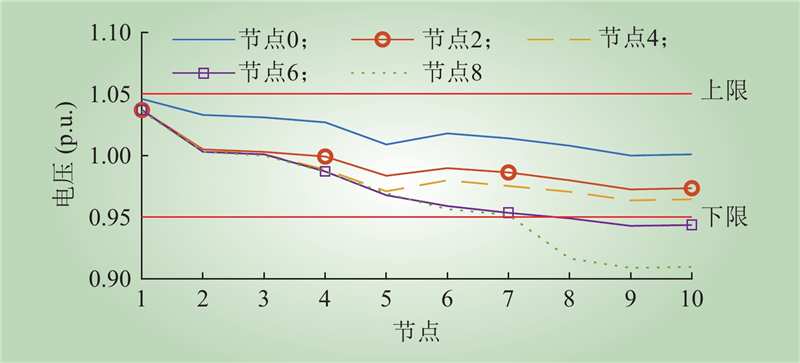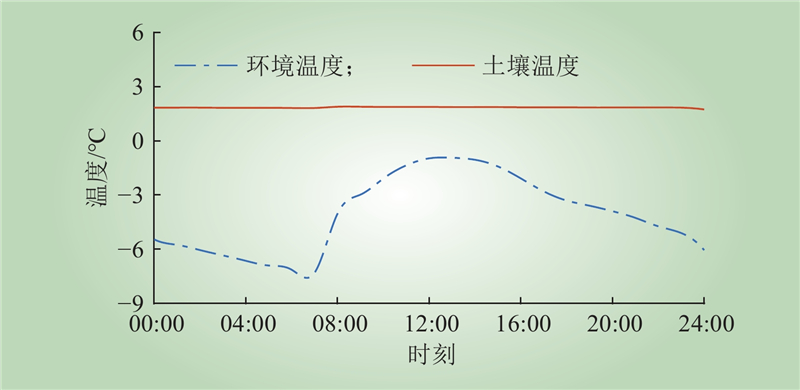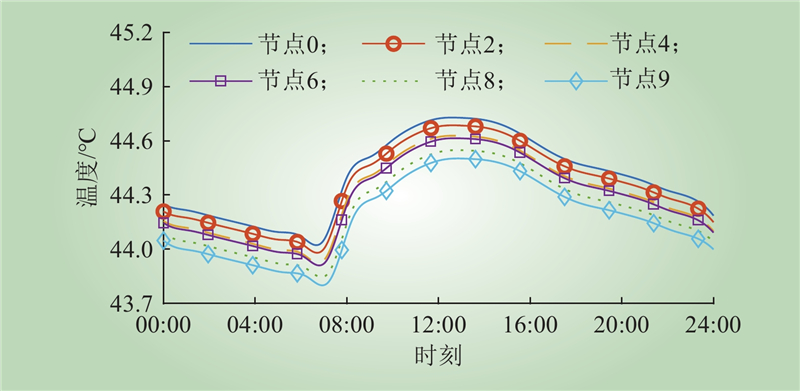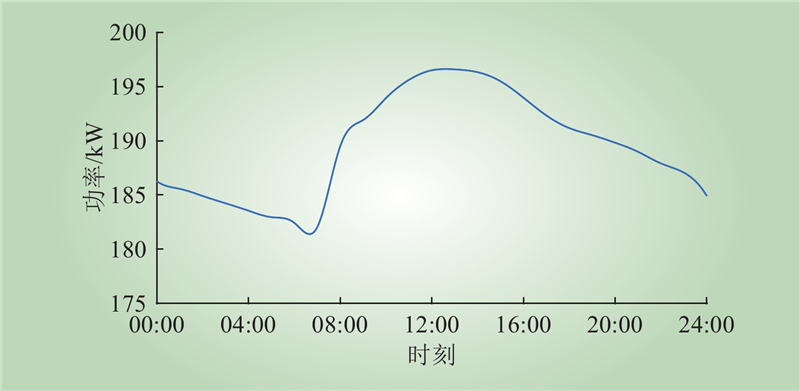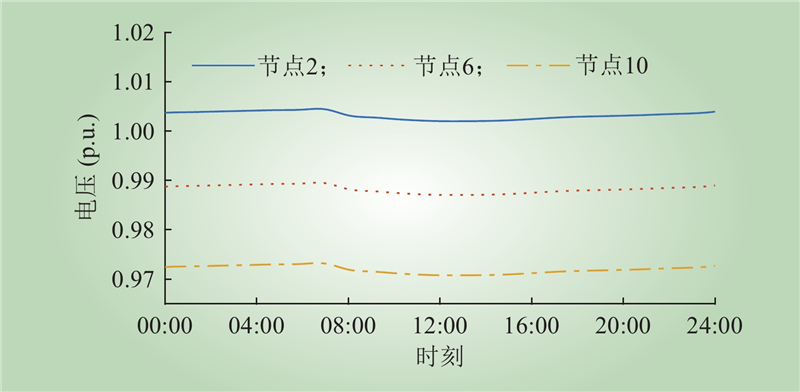| 1 |
屈小云, 吴鸣, 李奇, 等. 多能互补综合能源系统综合评价研究进展综述[J]. 中国电力, 2021, 54 (11): 153- 163.
|
|
QU Xiaoyun, WU Ming, LI Qi, et al. Review on comprehensive evaluation of multi-energy complementary integrated energy systems[J]. Electric Power, 2021, 54 (11): 153- 163.
|
| 2 |
张敏, 王金浩, 常潇, 等. 考虑可再生能源不确定性的热-电耦合微能源系统多目标鲁棒规划方法[J]. 中国电力, 2021, 54 (4): 119- 129, 140.
|
|
ZHANG Min, WANG Jinhao, CHANG Xiao, et al. A multi-objective robust planning method for thermal-electrical coupling micro-energy system considering the uncertainty of renewable energy[J]. Electric Power, 2021, 54 (4): 119- 129, 140.
|
| 3 |
张思瑞, 李昊, 张庆, 等. 考虑配电网容量约束和建筑热惰性的城市换热站电制热补热优化配置方法[J]. 现代电力, 2023, 40 (2): 249- 258.
|
|
ZHANG Sirui, LI Hao, ZHANG Qing, et al. Optimal configuration method of electric heating and supplementary heating in urban heat exchange station considering constraints of distribution network capacity and building thermal inertia[J]. Modern Electric Power, 2023, 40 (2): 249- 258.
|
| 4 |
夏越, 陈颖, 杜松怀, 等. 综合能源系统多时间尺度动态时域仿真关键技术[J]. 电力系统自动化, 2022, 46 (10): 97- 110.
|
|
XIA Yue, CHEN Ying, DU Songhuai, et al. Key technologies for multi-time-scale dynamic time-domain simulation of integrated energy system[J]. Automation of Electric Power Systems, 2022, 46 (10): 97- 110.
|
| 5 |
孙浩, 陈永华. 综合能源系统多能流联合仿真技术研究[J]. 华电技术, 2020, 42 (5): 66- 72.
|
|
SUN Hao, CHEN Yonghua. Research on multiple energy flow co-simulation technology applied in integrated energy system[J]. Huadian Technology, 2020, 42 (5): 66- 72.
|
| 6 |
LIU X Z, WU J Z, JENKINS N, et al. Combined analysis of electricity and heat networks[J]. Applied Energy, 2016, 162, 1238- 1250.
DOI
|
| 7 |
吴琼, 吴彦琪, 任洪波, 等. 基于双向耦合的综合能源系统电热联合潮流计算[J]. 热力发电, 2021, 50 (4): 14- 22.
|
|
WU Qiong, WU Yanqi, REN Hongbo, et al. Power flow calculation of combined electric and thermal for integrated energy system based on two-way coupling[J]. Thermal Power Generation, 2021, 50 (4): 14- 22.
|
| 8 |
张义志, 王小君, 和敬涵, 等. 考虑供热系统建模的综合能源系统最优能流计算方法[J]. 电工技术学报, 2019, 34 (3): 562- 570.
|
|
ZHANG Yizhi, WANG Xiaojun, HE Jinghan, et al. Optimal energy flow calculation method of integrated energy system considering thermal system modeling[J]. Transactions of China Electrotechnical Society, 2019, 34 (3): 562- 570.
|
| 9 |
陈彬彬, 孙宏斌, 尹冠雄, 等. 综合能源系统分析的统一能路理论(二): 水路与热路[J]. 中国电机工程学报, 2020, 40 (7): 2133- 2142, 2393.
|
|
CHEN Binbin, SUN Hongbin, YIN Guanxiong, et al. Energy circuit theory of integrated energy system analysis(II): hydraulic circuit and thermal circuit[J]. Proceedings of the CSEE, 2020, 40 (7): 2133- 2142, 2393.
|
| 10 |
杨经纬, 张宁, 康重庆. 多能源网络的广义电路分析理论: (一)支路模型[J]. 电力系统自动化, 2020, 44 (9): 21- 32.
|
|
YANG Jingwei, ZHANG Ning, KANG Chongqing. Analysis theory of generalized electric circuit for multi-energy networks: part one branch model[J]. Automation of Electric Power Systems, 2020, 44 (9): 21- 32.
|
| 11 |
杨经纬, 张宁, 康重庆. 多能源网络的广义电路分析理论: (二)网络模型[J]. 电力系统自动化, 2020, 44 (10): 10- 21.
DOI
|
|
YANG Jingwei, ZHANG Ning, KANG Chongqing. Analysis theory of generalized electric circuit for multi-energy networks: part two network model[J]. Automation of Electric Power Systems, 2020, 44 (10): 10- 21.
DOI
|
| 12 |
LAN T, STRUNZ K. Modeling of the enthalpy transfer using electric circuit equivalents: theory and application to transients of multi-carrier energy systems[J]. IEEE Transactions on Energy Conversion, 2019, 34 (4): 1720- 1730.
DOI
|
| 13 |
YANG J W, ZHANG N, BOTTERUD A, et al. On an equivalent representation of the dynamics in district heating networks for combined electricity-heat operation[J]. IEEE Transactions on Power Systems, 2020, 35 (1): 560- 570.
DOI
|
| 14 |
CENGEL Y A. Introduction to thermodynamics and heat transfer[M]. New York, NY, USA: McGraw-Hill Science/Engineering/Math, 2007.
|
| 15 |
PEREZ-MORA N, BAVA F, ANDERSEN M, et al. Solar district heating and cooling: a review[J]. WILEY, 2018, (4): 3888.
|
| 16 |
ISERMANN R. Mechatronic systems: fundamentals[M]. London: Springer-Verlag, 2005.
|
| 17 |
FREITAS C J. The issue of numerical uncertainty[J]. Applied Mathematical Modelling, 2002, 26 (2): 237- 248.
DOI
|
| 18 |
GAUTSCHI W. Numerical analysis[M]. An introduction birkhauser. Barton, Mass, USA, 1997.
|
| 19 |
易成星, 杨伟, 张晋. 基于相量算法的STATCOM在风机无功补偿中的应用[J]. 电网与清洁能源, 2014, 30 (9): 92- 97, 101.
DOI
|
|
YI Chengxing, YANG Wei, ZHANG Jin. Application of a STATCOM based on the phasor algorithm in the reactive compensation of wind generators[J]. Power System and Clean Energy, 2014, 30 (9): 92- 97, 101.
DOI
|
| 20 |
陈垣, 张波, 谢帆, 等. 电力电子化电力系统多时间尺度建模与算法相关性研究进展[J]. 电力系统自动化, 2021, 45 (15): 172- 183.
DOI
|
|
CHEN Yuan, ZHANG Bo, XIE Fan, et al. Research progress of interrelationship between multi-time-scale modeling and algorithm of power-electronized power system[J]. Automation of Electric Power Systems, 2021, 45 (15): 172- 183.
DOI
|
| 21 |
周淑慧, 孙慧, 王晨龙, 等. 政策驱动下的中国北方农村地区清洁取暖方式[J]. 天然气工业, 2020, 40 (3): 146- 156.
DOI
|
|
ZHOU Shuhui, SUN Hui, WANG Chenlong, et al. Policy-driven clean heating modes in the rural areas of the Northern China[J]. Natural Gas Industry, 2020, 40 (3): 146- 156.
DOI
|
| 22 |
国家质量监督检验检疫总局, 中国国家标准化管理委员会. 低压流体输送用焊接钢管: GB/T 3091—2015[S]. 北京: 中国标准出版社, 2016.
|
| 23 |
国家质量监督检验检疫总局, 中国国家标准化管理委员会. 设备及管道绝热设计导则: GB/T 8175—2008[S]. 北京: 中国标准出版社, 2009.
|
| 24 |
中国建筑标准设计研究院, 上海建筑设计研究院有限公司. 国家建筑标准设计图集08K507-108R418-1, 管道与设备绝热-保温[S]. 北京: 中国计划出版社, 2008.
|
| 25 |
核工业第二设计研究院. 03S401: 管道和设备保温、防结露及电伴热[S]. 北京: 中国计划出版社, 2003.
|
| 26 |
WANG Y R, YOU S J, ZHANG H, et al. Thermal transient prediction of district heating pipeline: optimal selection of the time and spatial steps for fast and accurate calculation[J]. Applied Energy, 2017, 206, 900- 910.
DOI
|
| 27 |
STEVANOVIC V D, ZIVKOVIC B, PRICA S, et al. Prediction of thermal transients in district heating systems[J]. Energy Conversion and Management, 2009, 50 (9): 2167- 2173.
DOI
|
| 28 |
ISERMANN R, MÜNCHHOF M. Identification of dynamic systems: an introduction with applications[M]. Berlin, Heidelberg: Springer Berlin Heidelberg, 2011.
|
| 29 |
赵可沦, 江境宏, 邓进, 等. 基于遗忘因子递推最小二乘法的锂电池等效电路模型参数辨识方法[J]. 电子测量技术, 2022, 45 (23): 53- 58.
|
|
ZHAO Kelun, JIANG Jinghong, DENG Jin, et al. Parameter identification method of lithium battery equivalent circuit model based on forgetting factor recursive least squares[J]. Electronic Measurement Technology, 2022, 45 (23): 53- 58.
|
| 30 |
CHAUDHRY S R, AHMED-ZAID S, DEMERDASH N A. An artificial-neural-network method for the identification of saturated turbogenerator parameters based on a coupled finite-element/state-space computational algorithm[J]. IEEE Transactions on Energy Conversion, 1995, 10 (4): 625- 633.
DOI
|
| 31 |
ZHOU S, WANG D Z, LI Y. Parameter identification of permanent magnet synchronous motor based on modified- fuzzy particle swarm optimization[J]. Energy Reports, 2023, 9, 873- 879.
|
| 32 |
LIU X Z, MANCARELLA P. Modelling, assessment and Sankey diagrams of integrated electricity-heat-gas networks in multi-vector district energy systems[J]. Applied Energy, 2016, 167, 336- 352.
DOI
|
| 33 |
GABRIELLI P, GAZZANI M, MARTELLI E, et al. Optimal design of multi-energy systems with seasonal storage[J]. Applied Energy, 2018, 219, 408- 424.
DOI
|
| 34 |
崔杨, 郭福音, 付小标, 等. 供用能转换促进风电消纳的综合能源系统源荷协调优化调度[J]. 电网技术, 2022, 46 (4): 1437- 1447.
|
|
CUI Yang, GUO Fuyin, FU Xiaobiao, et al. Source-load coordinated optimal dispatch of integrated energy system based on conversion of energy supply and use to promote wind power accommodation[J]. Power System Technology, 2022, 46 (4): 1437- 1447.
|
| 35 |
朱振山, 陈哲盛, 盛明鼎. 基于柔性行动器-评判器的园区综合能源系统运行优化[J]. 高电压技术, 2022, 48 (12): 4949- 4958.
|
|
ZHU Zhenshan, CHEN Zhesheng, SHENG Mingding. Operation optimization of park-level integrated energy system based on soft actor-critic[J]. High Voltage Engineering, 2022, 48 (12): 4949- 4958.
|



